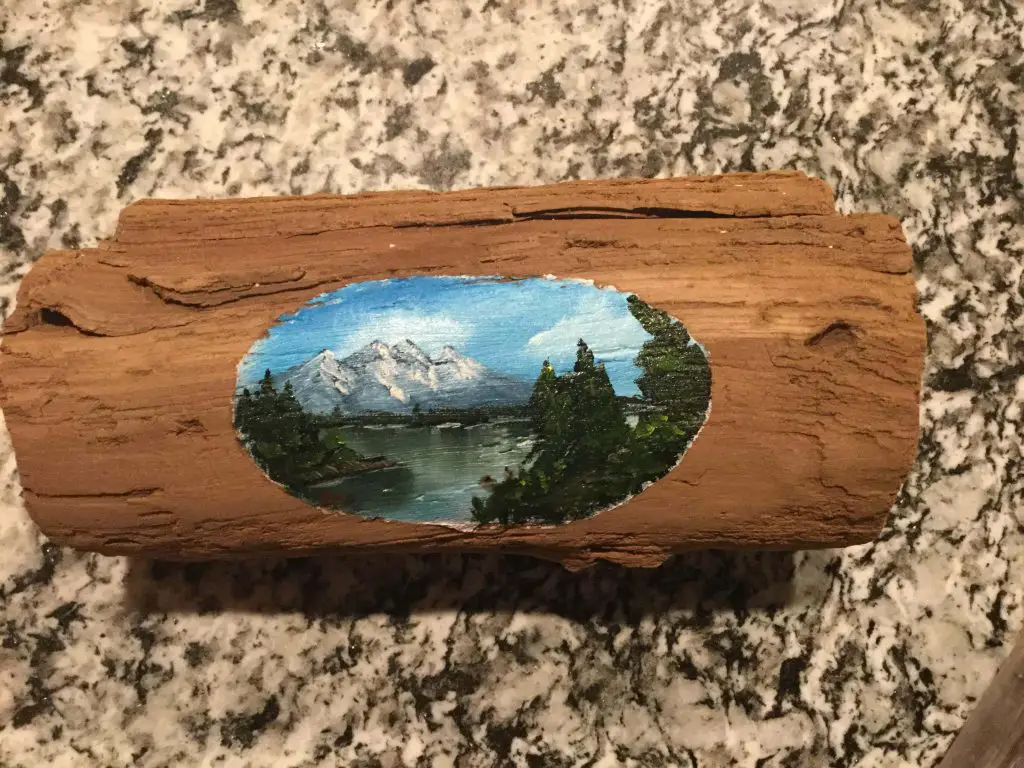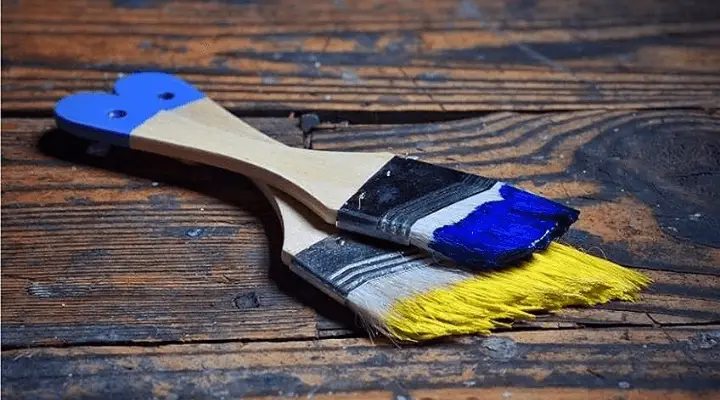Acrylic paint is a versatile medium that is widely used by artists due to its fast-drying properties and convenience. It has become a popular choice for painting on canvases, but many artists wonder if they can use it to paint on other surfaces, such as wood. The answer is yes, you can use acrylics to paint on wood, but there are some important considerations to keep in mind to ensure the best possible results. In this article, we will explore the process of painting wood with acrylics and provide some tips and tricks to help you achieve a beautiful piece.
Recommended Reading
How to paint stained wood
Common types of Acrylic Paints
Artist Acrylics:
Artist acrylics are a high-quality form of acrylic paint that is used by professional artists and serious amateurs. They contain a higher concentration of pigment than student-quality paints, which makes them more vibrant and able to produce a wider range of colors. Artist acrylics come in a vast array of colors, giving artists the ability to mix and match colors to create a unique palette. Some of the most popular brands of artist acrylics include Winsor & Newton, Golden, and Liquitex.
Industrial Acrylics:
Industrial acrylic paint is specifically designed for use in industrial settings and applications. It is made from an acrylic polymer emulsion and suspended pigment particles, creating a water-based paint that is easy to apply and provides a durable, long-lasting finish. Industrial acrylic paint has many advantages over traditional solvent-based paints, including lower VOC emissions, faster drying times, and better resistance to weathering and fading. It is commonly used in the automotive, aerospace, marine, and industrial equipment industries, and can adhere to a wide range of surfaces, including metal, plastic, and concrete. Popular brands of industrial acrylic paint include Rust-Oleum, Sherwin-Williams, and PPG Industries.
How To Apply Acrylic paint On Wood.

Prepare your wood surface
Before you start painting, you need to prepare your wood surface to ensure that it is clean and smooth. Begin by wiping down the surface of the wood with a damp cloth to remove any dust or debris. Next, lay the board on a flat surface and use sandpaper or a sanding sponge to sand down the wood until it is smooth. Finally, dust off any excess grains with a clean cloth. This is a crucial step especially if you want an easy-to-sketch-on surface after priming.
Apply a thin layer of wood primer
To ensure that your acrylic paint adheres properly to the wood, you need to apply a thin layer of wood primer. Use a brush to apply Gesso or KILZ Premium Wood primer, and allow it to dry for an extended period to achieve a smoother surface.
Sketching
If you’re working on a project that doesn’t require a sketch, feel free to skip this step. However, if your artwork requires a preliminary sketch, now is the perfect time to do it after your primer has dried. You can use a pencil or colored chalk to draw your sketch.
Paint the wood surface with acrylic paint
After completing your sketch, it’s time to paint! Take your paintbrush and apply your desired color of acrylic paint onto the wood surface. It’s important to allow the paint to dry completely before applying another layer. Building up a thick layer of two to three coats of acrylic paint is recommended, as it ensures that even if the top layer peels, the underlying layers will support the image and prevent any distortions.
Apply a sealer
After painting the wood surface with acrylics, it is essential to apply a sealer to protect your work from chipping and peeling. Liquitex acrylic and Mod Podge finishes are considered the best sealers as they bring out the natural beauty of your work. Apply the sealer using a clean brush and allow it to dry thoroughly.
Do you have to sand and prime wood before painting

As an artist, it’s important to know when to experiment and bend the rules to achieve your desired artistic effect. For example, you could choose to skip priming your wood and apply acrylic paint directly to gain a more expressive advantage. Similarly, you might decide to avoid sanding your wood surface to use the natural wood whiskers expressively, but this choice will often come at the expense of durability.
It’s important to remember that these experimental techniques can result in unique and exciting outcomes, but they may not always provide long-lasting results. If you decide to skip priming or sanding your wood surface, you should be aware of the potential risks and make a conscious decision based on your artistic goals.
Also, check: How to Remove Acrylic Paint From Wood
Best Ways to keep your Acrylic Paints Moist
Creating art with acrylic paints is a gratifying experience. However, its fast-drying properties can be a frustrating challenge, especially for beginners. You may find that your paint dries too quickly on your palette or canvas when exposed to open air. But don’t worry, here are some tips to help you keep your acrylic paints moist and workable for a more extended period.
- Spray Atomizer – To keep your acrylic paint moist, you can use a small spray bottle filled with water. Simply spray the water on your palette to keep your paint workable.
- Stay-Wet Palette – An excellent example of a stay-wet palette is the Master Sta-Wet Premier Palette. It features a sponge layer covered with an acrylic film that helps keep the paint moist for a more extended period when mixed with the paint.
- Paper Towels – Wet some paper towels with water and squeeze your paints onto them. Transfer the pigments onto a palette and mix them with a paintbrush. Spray the paint as required to keep it moist.
- Liquitex Palette Wetting Spray – Instead of using water to spray your palette, you can use Liquitex Palette Wetting Spray to keep your paint moist. The spray contains components that slow the drying rate of your paint, making your painting more manageable and enjoyable.
- Golden Open Acrylics – Golden Open Acrylics are specially formulated to stay moist for an extended period. They are an excellent alternative to regular acrylic paints.
- Cool Environment – To reduce the effects of the sun on your paints, work indoors or during the morning and evening hours when the sun rays are less intense.
Key takeaways: Using acrylic paints on wood
- Acrylic paint is a versatile medium that can be used to paint on various surfaces, including wood.
- Artist acrylics are of higher quality than student-quality paints, and industrial acrylic paint is designed for use in industrial settings and applications.
- Before painting wood with acrylics, prepare the wood surface by wiping it down with a damp cloth, sanding it until it is smooth, and applying a thin layer of wood primer.
- Apply a base layer of acrylic paint, and then paint the wood surface with your desired color of acrylic paint, allowing each layer to dry thoroughly before applying another.
- After painting, apply a sealer to protect the work from chipping and peeling.
- Experimenting with not sanding or priming wood can result in unique and exciting outcomes, but it may not always provide long-lasting results.
- To keep acrylic paints moist, use a spray atomizer, a stay-water palette, work with wet paper towels, or spray your palette with water.

